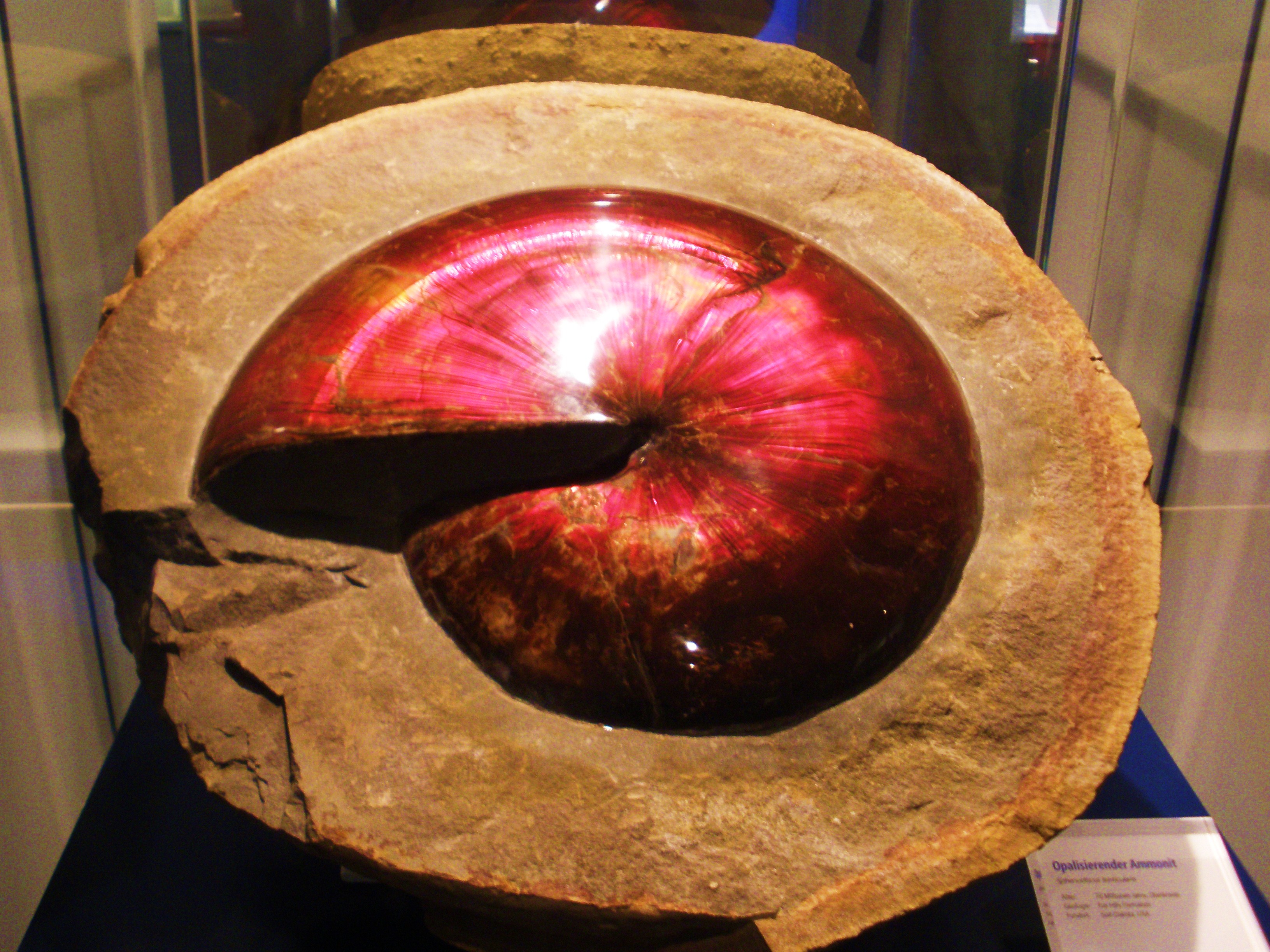Sphenodiscus - Opalized on:
[Wikipedia]
[Google]
[Amazon]
''Sphenodiscus'' is an extinct genus of acanthoceratacean  Fossils have been found throughout
Fossils have been found throughout
''Sphenodiscus''
in the Paleobiology Database {{Taxonbar, from=Q7576640 Ammonitida genera Acanthoceratoidea Late Cretaceous ammonites of North America Cretaceous United States Maastrichtian life Hell Creek fauna Cretaceous Mexico Fossils of Mexico Ammonites of Europe Late Cretaceous animals of Europe Fossils of the Netherlands Ammonites of South America Late Cretaceous animals of South America Cretaceous Brazil Fossils of Brazil Ammonites of Asia Late Cretaceous animals of Asia Fossils of India Ammonites of Africa Late Cretaceous animals of Africa Fossils of Nigeria Campanian genus first appearances Maastrichtian genus extinctions Fossil taxa described in 1871
ammonite
Ammonoids are a group of extinct marine mollusc animals in the subclass Ammonoidea of the class Cephalopoda. These molluscs, commonly referred to as ammonites, are more closely related to living coleoids (i.e., octopuses, squid and cuttlefish) ...
. The genus has been found from many continents and is thought to have had a large global distribution during the Maastrichtian stage of the Late Cretaceous. It was one of the last ammonoids to have evolved before the entire subclass became extinct during the Paleocene, which was directly after the Cretaceous–Paleogene extinction event.
 Fossils have been found throughout
Fossils have been found throughout North America
North America is a continent in the Northern Hemisphere and almost entirely within the Western Hemisphere. It is bordered to the north by the Arctic Ocean, to the east by the Atlantic Ocean, to the southeast by South America and the Car ...
from localities in South Carolina, North Carolina, South Dakota, Maryland, New Jersey and Mexico. There is also evidence of the genus being present from the island of Trinidad, although the material found from here cannot be classified at the species level. Common species found in North America include ''S. lobatus'', ''S. lenticularis'', and ''S. pleurisepta''. New species have been found from localities outside of North America such as ''S. binkhorsti'' from the Maastricht Formation
The Maastricht Formation (Dutch: ''Formatie van Maastricht''; abbreviation: MMa), named after the city of Maastricht in the Netherlands, is a geological formation in the Netherlands and Belgium whose strata date back to the Late Cretaceous, within ...
in the Netherlands, ''S. siva'' from the Valudavur Formation in India and ''S. brasiliensis'' from the beds along the banks of the Rio Gramame in Brazil. Many specimens of ''S. lobatus'' have also been found from the Nkporo Shale in Nigeria.
The shell of ''Sphenodiscus'' was streamlined and lateromedially compressed with overlapping whorls and a small umbilicus. The ventral edge of the shell tends to be sharply angled. The outer surface is generally smooth in fossil specimens, although certain species at different stages of ontogenic development may possess many small tubercles along their surfaces. ''Sphenodiscus'' had a complex suture pattern with many small branching lobes and saddles.
References
External links
''Sphenodiscus''
in the Paleobiology Database {{Taxonbar, from=Q7576640 Ammonitida genera Acanthoceratoidea Late Cretaceous ammonites of North America Cretaceous United States Maastrichtian life Hell Creek fauna Cretaceous Mexico Fossils of Mexico Ammonites of Europe Late Cretaceous animals of Europe Fossils of the Netherlands Ammonites of South America Late Cretaceous animals of South America Cretaceous Brazil Fossils of Brazil Ammonites of Asia Late Cretaceous animals of Asia Fossils of India Ammonites of Africa Late Cretaceous animals of Africa Fossils of Nigeria Campanian genus first appearances Maastrichtian genus extinctions Fossil taxa described in 1871